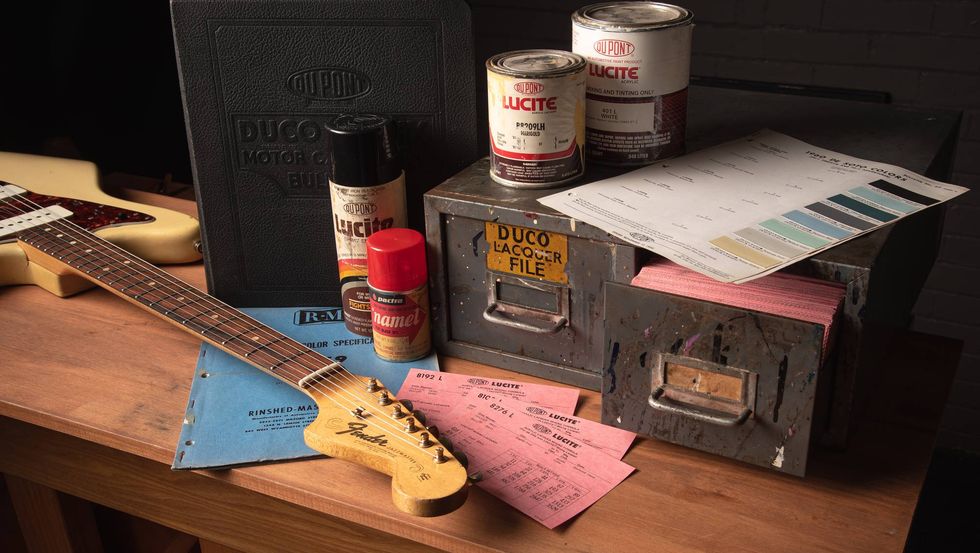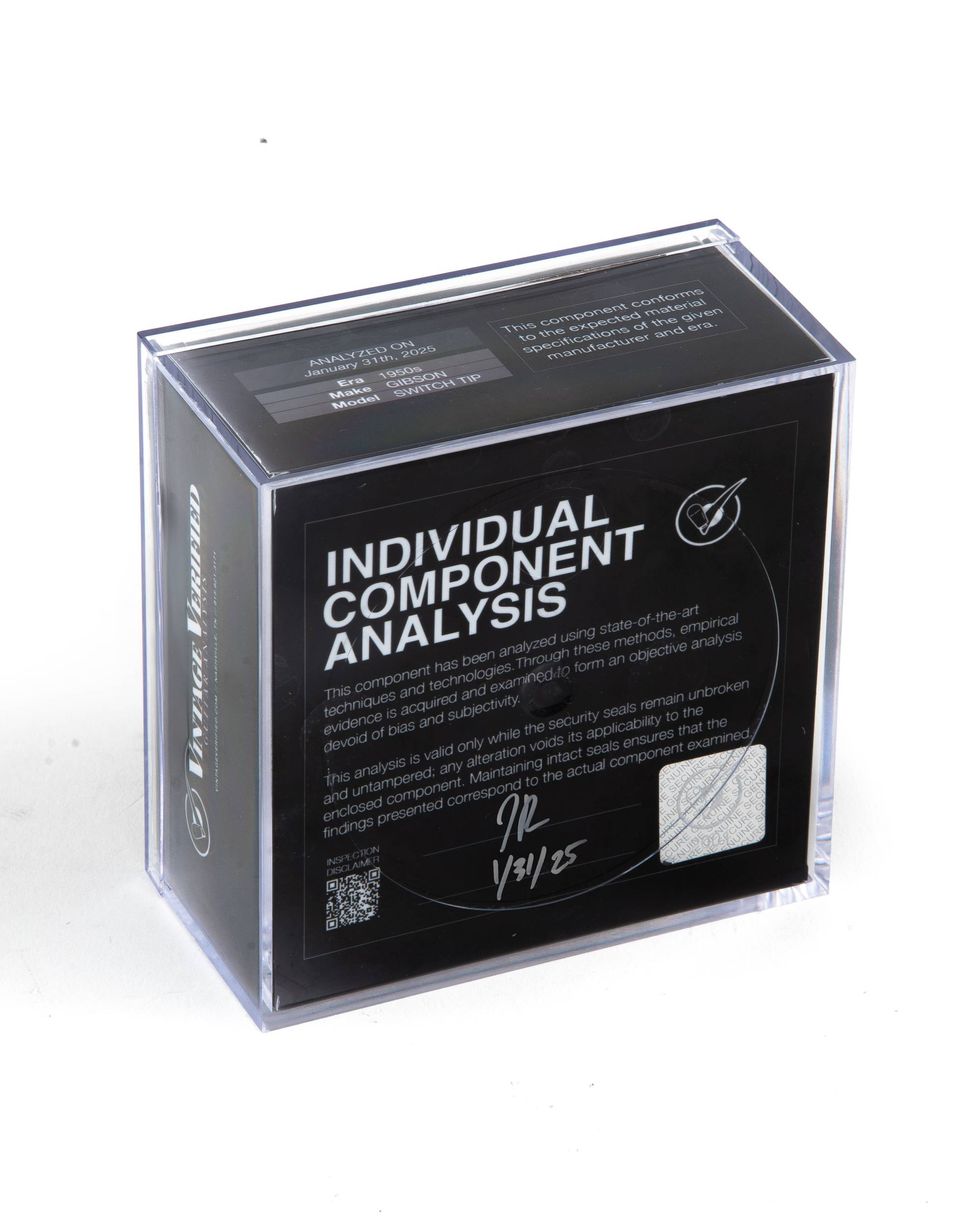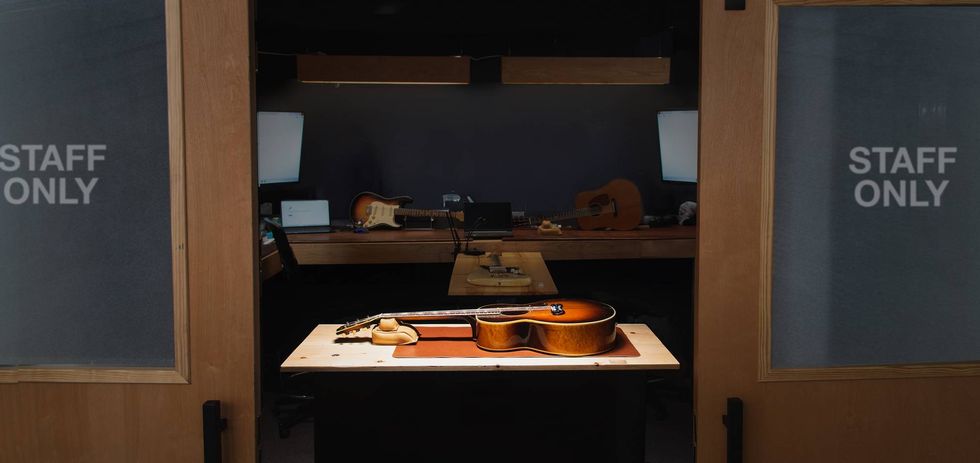On our bench was a very nice ‘71 Gibson SG. At a glance, I could tell this guitar was well taken care of and played throughout the years. It was also pleasant to see that the neck didn’t bear any of the classic war wounds, such as a repaired headstock break or neck joint fracture. This early-‘70s guitar really just needed some major adjustments to be ready to play its part in the next hit song.
This cool-looking guitar has pointed double cutaways and a scalloped mahogany body, two humbucking PAF pickups, four Gibson amp-style knobs, a five-layer black beveled pickguard, ABR-1 Tune-o-matic bridge with white nylon saddles, pearloid trapezoid fingerboard inlays, Indian rosewood fingerboard, neck-body joint at 19th fret (the heel extends to 16th fret), crown peghead inlay, Maestro vibrato with engraved lyre and Gibson logo on the cover plate, chrome-plated parts, a 6-digit serial number and “Made in USA” on the back of the peghead, and a cherry red finish.
Collapsed Bridge 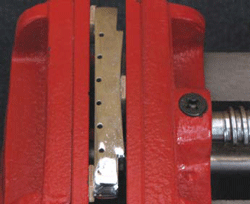
Saddle String 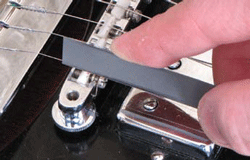
Neck Relief 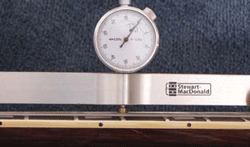
Slippery Knobs 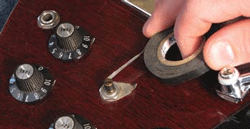
For this month’s restoration, I used the following tools and materials, available at stewmac.com:
#1820 Angle Vise
#5212 Luthier’s Digital Caliper
#0821–#5313 Gauged Nut Slotting Files
#0825 File Cleaning Brush
#4894 6" Steel Rule
#5893 Guitar Nutdrivers
#6106 Pocket Truss Rod Wrench
#0353 Understring Radius Gauges
#2004 Neck Relief Gauge
#5027 DeoxIT Pot & Switch Cleaner
#5951 Pickup Coil Tape
As always, it’s a pleasure sharing another adventure in “Restoring An Original.”
John Brown
John Brown, of Brown's Guitar Factory, is the inventor of the Fretted/Less bass. He owns and operates a full guitar manufacturing and repair/restoration facility, which is staffed by a team of talented luthiers. He is also the designer of guitar making/repair tools and accessories that are used today by instrument builders throughout the world.
brownsguitarfactory.com
info@brownsguitarfactory.com







![Rig Rundown: John 5 [2026]](https://www.premierguitar.com/media-library/youtube.jpg?id=62681883&width=1245&height=700&quality=70&coordinates=0%2C45%2C0%2C45)

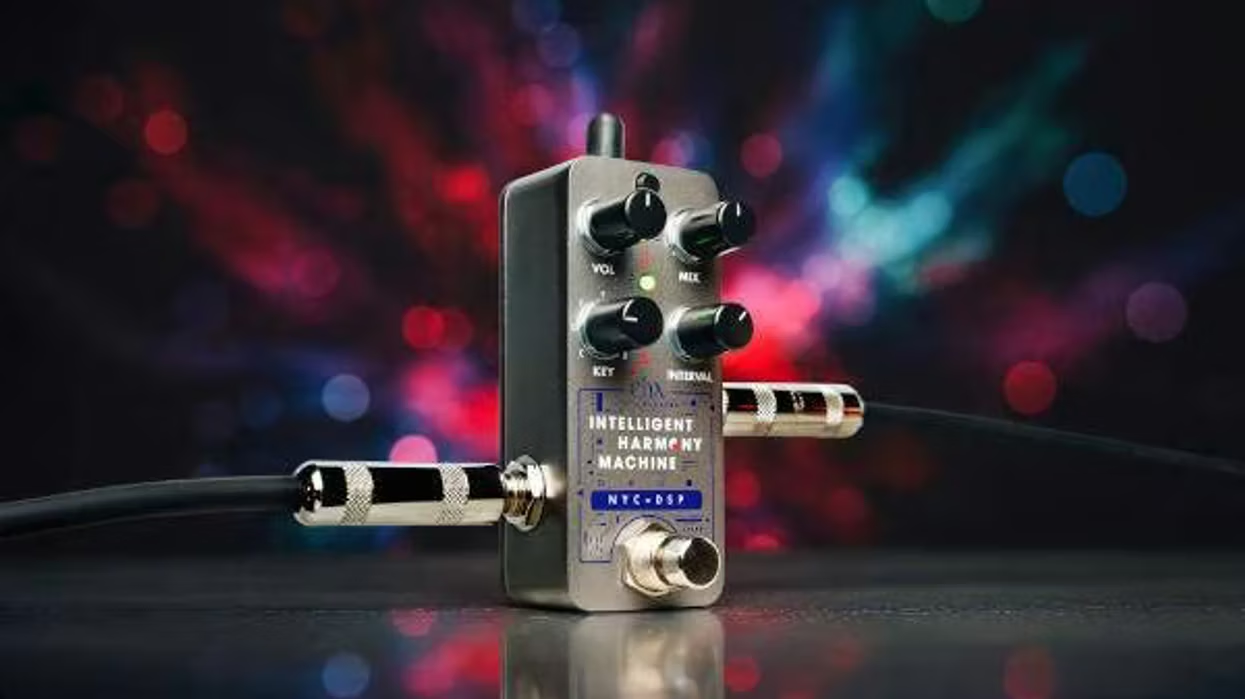


![Rig Rundown: Russian Circles’ Mike Sullivan [2025]](https://www.premierguitar.com/media-library/youtube.jpg?id=62303631&width=1245&height=700&quality=70&coordinates=0%2C0%2C0%2C0)

